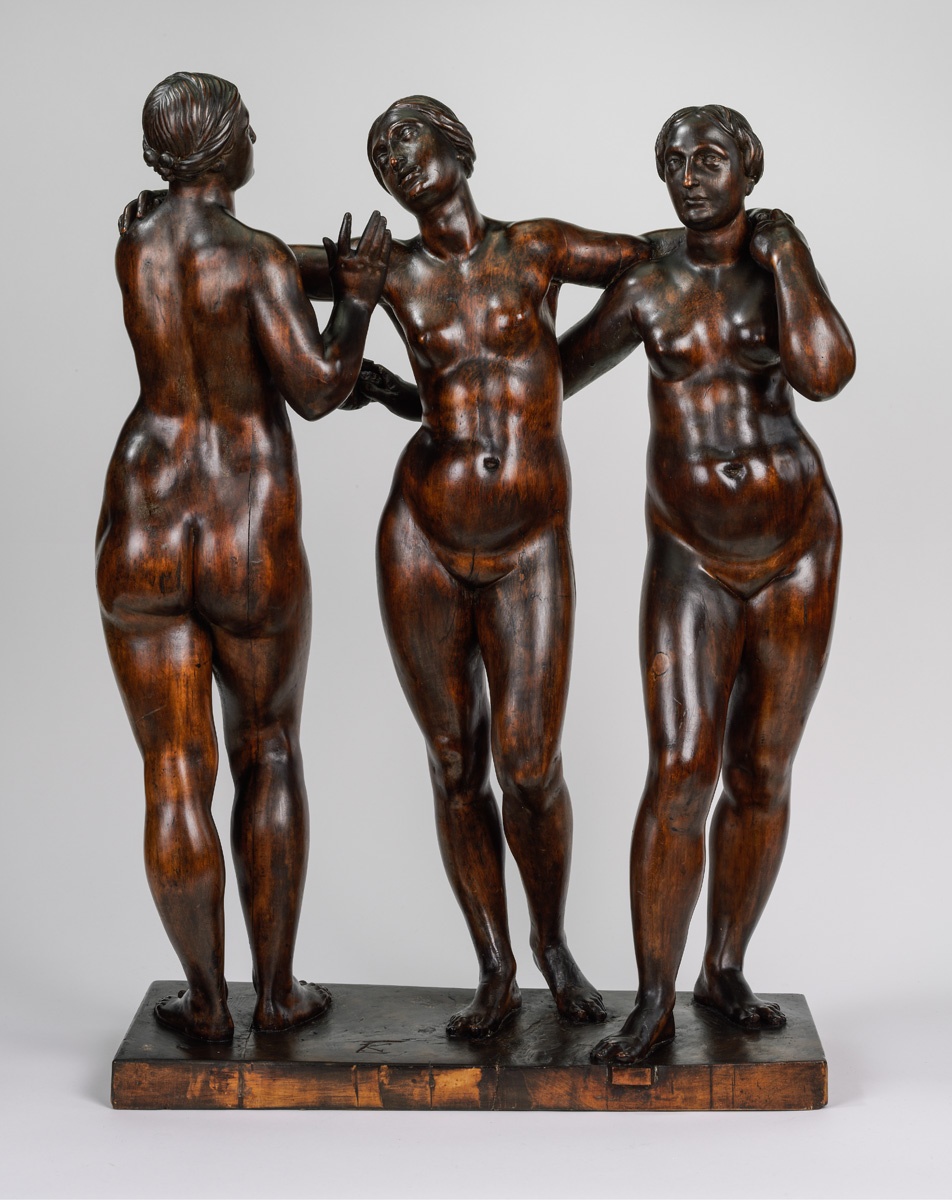Like many of his fellow northern artists, Leonhard Kern travelled to Italy as a young man, where he spent no less than five years. The stations of his study tour were more unusual: as well as Rome he visited Naples, northern Africa and Ljubljana. Later he settled in Schwäbisch Hall in southern Germany, where he ran a large workshop. His career was overshadowed by the Thirty-Year War (1618-1648), which almost completely prevented him receiving major commissions. Thus Kern was one of the first to start working for collectors and art dealers. His small-scale ivory, alabaster and wooden statues enjoyed particular popularity among his contemporaries.More than half a metre tall and carved from several pieces of limewood, the Budapest Three Graces occupies a special place in the sculptor’s oeuvre. Portrayals of the Three Graces of mythology grew popular in Renaissance Italy through the influence of classical art. The most favoured model was the Hellenistic marble Three Graces group, known through a Roman copy, which was installed in the Piccolomini Libary in Siena in 1503. This may have inspired Kern’s wooden sculpture, which somewhat differently to the prototype shows the female figure on the right not with her back, but frontally. Kern was fond of making nudes, which were inspired by both his experience in Italy and the female figures of Rubens. The three nudes in the Budapest group are linked by their arms with brilliant technical skill.Miriam Szőcs
en

